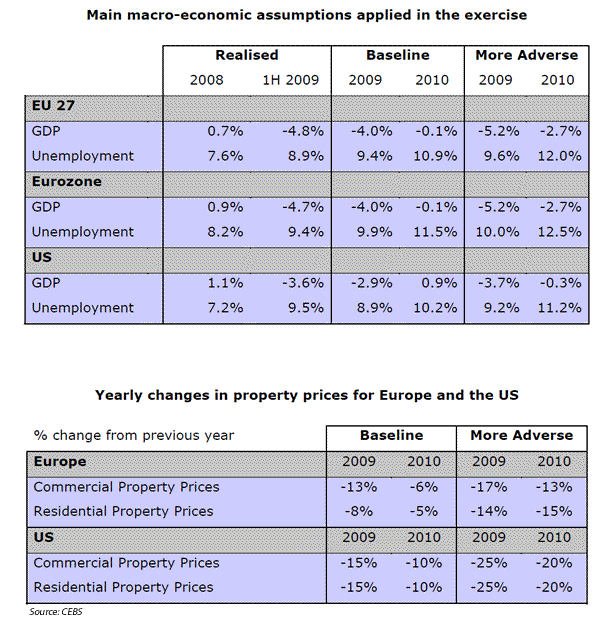Disclosure of stress testing results aims to curb bank fears.
It’s open kimono time for European banks. On Thursday the EU agreed to finally follow the US’s lead and disclose stress test results for Europe’s top banks.
According to Herman Van Rompuy, EU president, the test results of 25 European banks would be published in the second half of July. Most national banking authorities are also seeking pledges of support for any bank that failed the tests, which would include the ability to draw from the EU’s recently created EUR750mn backstop facility.
Efforts by Spain to publish stress test results on their own, and speculation that Germany might do the same, prompted the EU-wide action. Spain pushed for bank-specific disclosures after having its banks shut out of international capital markets on speculation that one or more might be in trouble.
CEBS Round 2
The Committee of European Banking Supervisors (CEBS) will carry out the testing. The CEBS, which is an advisory body of the EU’s national financial regulators, carried out a stress-test exercise last year of 22 financial institutions it deemed to be of “systemic” importance to the EU’s economy, but did not release the individual bank results. However, it did conclude that these banks were sufficiently capitalized in aggregate: Tier 1 capital for the banks in aggregate would be well above 9 percent under the baseline scenario and above 8 percent for the adverse scenario, with no bank expected to fall below 6 percent. Also, the potential aggregate credit and trading losses under the prior test’s adverse scenario for 2009-2010 were EUR400bn in 2009, well below the EUR750bn in the current bailout fund. But would today’s adverse scenario be much worse?
Round 1 Assumptions

What is expected to be a similar test is being conducted by the CEBS over the course of this month. However, this time the CEBS will assess individual bank’s capitalization needs, rather than the banks in aggregate.
Much like the US Supervisory Capital Assessment Program (SCAP), the plan with the CEBS stress tests is that they will emphasize capital needs under a deeper and longer crisis scenario than is currently the consensus and provide the means for securing additional capital for those that need it. In so doing, the adverse scenario becomes less likely. And as with the US process, an emphasis on testing for adequate liquidity will follow once capital is deemed adequate—and this is indicated in the CEBS’ proposed revised stress-testing guidelines that are set to be implemented after June 30.
Market impact
While the immediate market reaction to the announcement has been positive, the devil will be in the details. The first question is will the stress tests by stringent enough, followed by the second question of what they reveal. Bank analysts are already hard at work trying to determine the stress testing details. One fear is that for political reasons, the stress-testing guidelines will tread softly on the value of banks’ sovereign debt holdings (e.g., that of Greece, Spain, Portugal and Ireland), which is the source of most bank health concerns.
Accordingly, treasurers monitoring bank counterparty risk or considering changes to banking relationships will have new data to ponder in the stress test results provided they wait a month. The impact on capital markets should also be considered, since if European banks follow the US example, any capital needs suggested by the stress test results will likely be met with substantial new capital raises by the banks able to do so. Others that plan to be in the market over the summer will need to consider the potential crowding out effect.